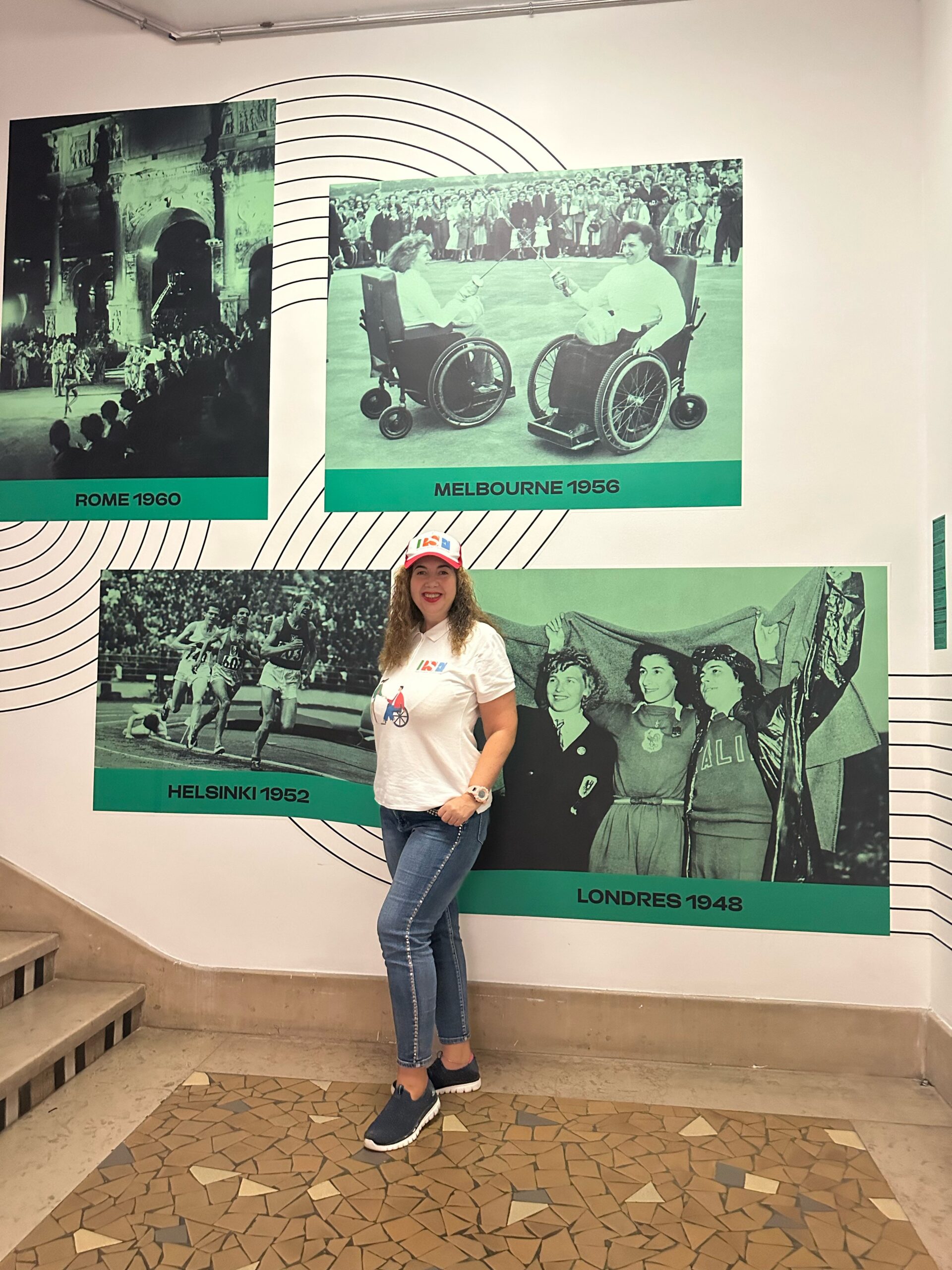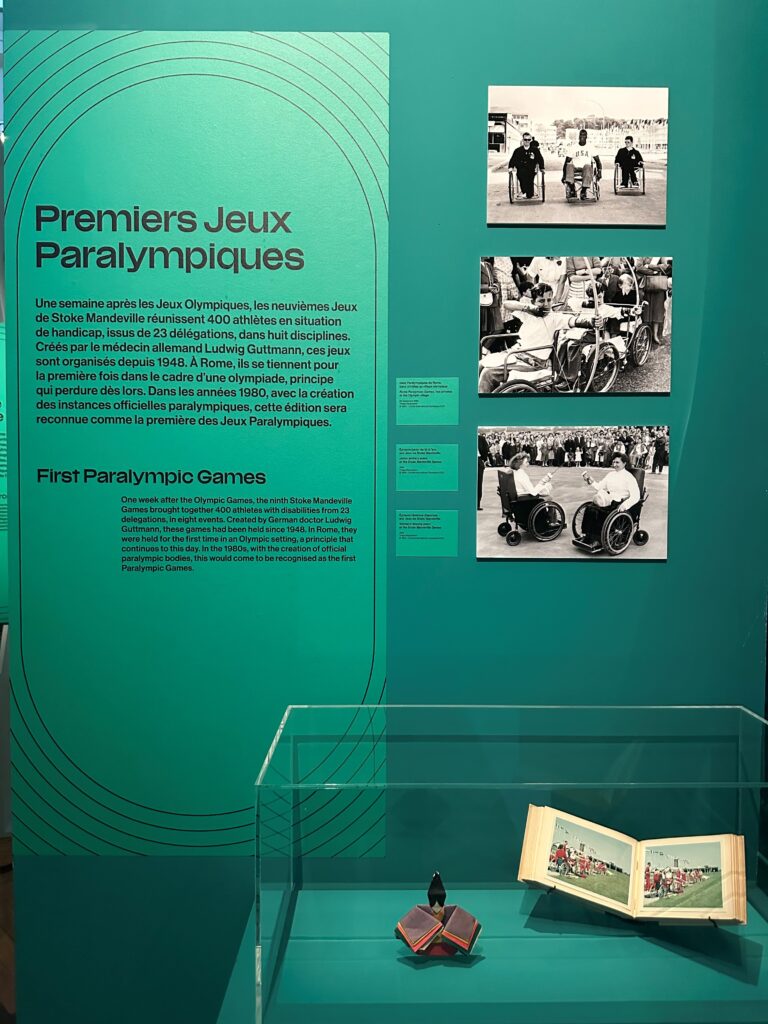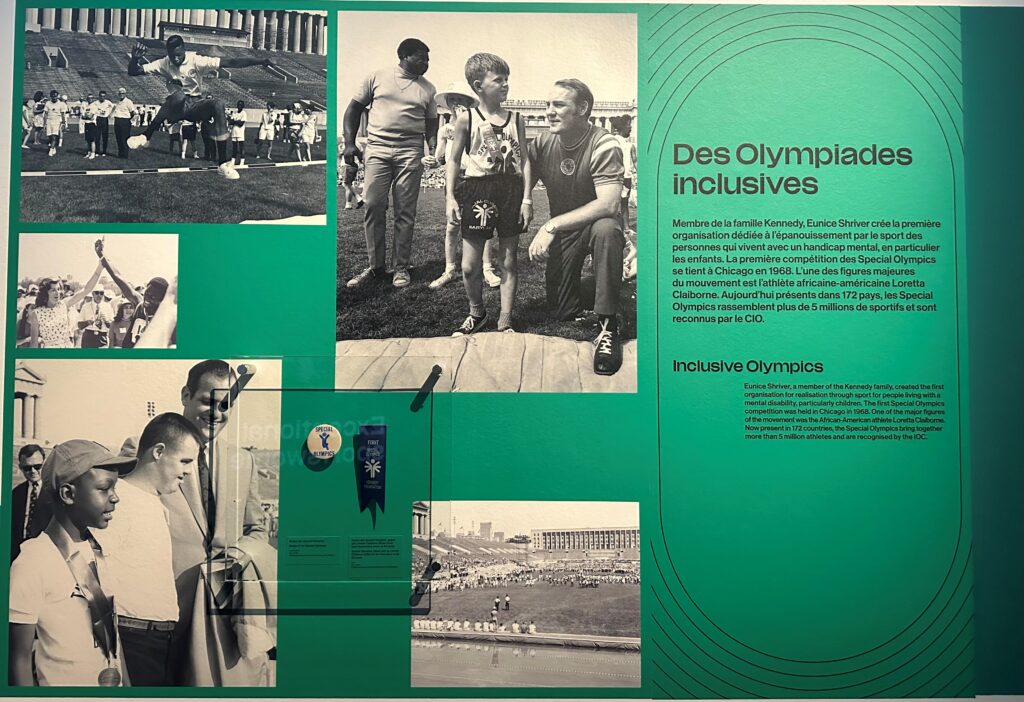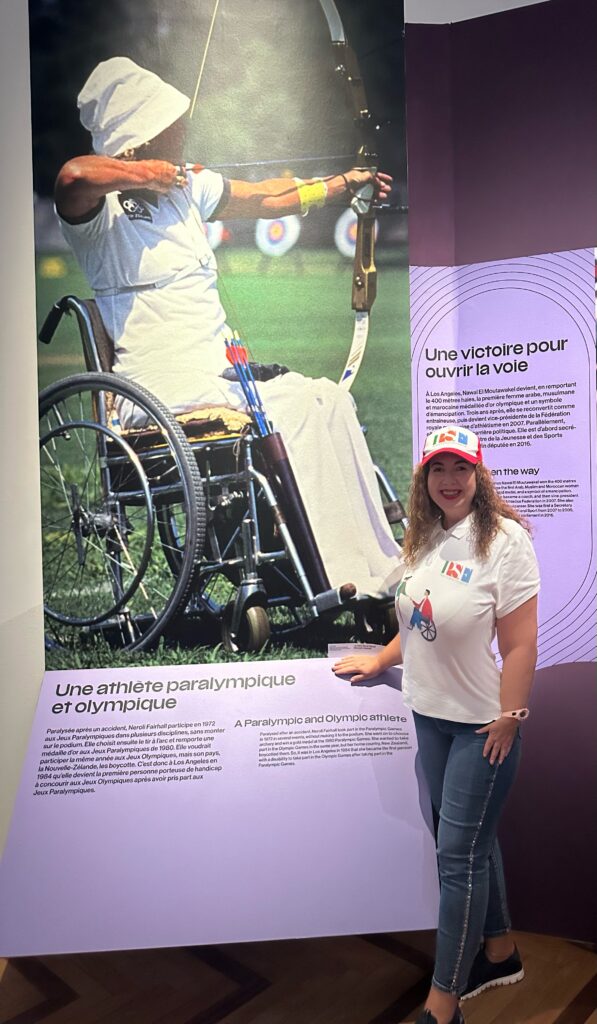
Olympism, a story of the world
During the Paralympic Games Vice President and Founder of IPC visited the exhibition “Olympism, a story of the world” held in Palais de la Porte Doree.
The ambition of this exhibition is to tell an alternative history of the world, viewed through the saga of the Summer Olympic Games, from the ones held in Athens in 1896 to the Paris Olympic and Paralympic Games in 2024.
The history of Paralympic Games is shown in the exhibition in a very detailed way with all significant turning points.

1924: The birth of an international deaf sporting movement
The first Silent International Games were held from 10 to 17 August 1924 at the Pershing Stadium in Paris. They united nearly 150 deaf athletes representing nine countries. This competition was a tribute to the vitality of the deaf movement that became organised at the start of the 20th century, seeking to combat the stigmatising social representations of the time. Officially recognised by the IOC in 1955, these Games are now called the Deaflympics, and they are held every four years.)
1948-1980: From Stoke Mandeville Games to First Paralympic Games
One week after the Olympic Games, the ninth Stoke Mandeville Games brought together 400 athletes with disabilities from 23 delegations, in eight events. Created by German doctor Ludwig Guttmann, these games had been held since 1948. In Rome, they were held for the first time in an Olympic setting, a principle that continues to this day. In the 1980s, with the creation of official paralympic bodies, this would come to be recognised as the first Paralympic Games.
Pictures from the exhibition on First Paralympic Games.
1968:Inclusive Olympics

Eunice Shriver, a member of the Kennedy family, created the first organisation for realisation through sport for people living with a mental disability, particularly children. The first Special Olympics competition was held in Chicago in 1968. One of the major figures of the movement was the African-American athlete Loretta Claiborne. Now present in 172 countries, the Special Olympics bring together more than 5 million athletes and are recognised by the IOC.
2000: Worldwide recognition of The Paralympic Games

The Sydney Paralympic Games in 2000 changed the way they were regarded due to the exceptional sporting level and growing recognition. Although they had been held at the same sites as the Olympic Games since Seoul in 1988, the 2000 Games were a turning point, bringing together 3,879 athletes from 123 countries with 18 sports on the programme. One million two hundred thousand entrance tickets were sold and 300 million viewers watched the competitions on television.

Picture of Olesya Zaglada in front of the picture of unique Paralympic and Olympic athlete Neroli Fairhall. Paralysed after an accident, Neroli Fairhall took part in the Paralympic Games in 1972 in several events, without making it to the podium. She went on to choose archery and win a gold medal at the 1980 Paralympic Games at Arnheim Holland. She earned selection for the Olympic Games in the same year, a historic achievement, but her home country, New Zealand, boycotted them. So, it was in Los Angeles in 1984 that she became the first person with a disability to take part in the Olympic Games after taking part in the Paralympic Games. Neroli Fairhall gained a place in the record books by becoming the first paraplegic athlete to compete in the Olympics. When asked if she had an advantage shooting from a seated position, she once replied, “I don’t know. I’ve never shot standing up.”
